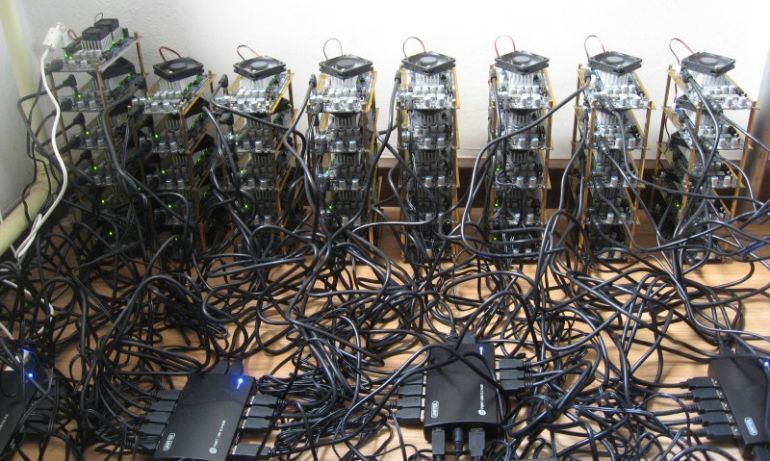Bitcoin is money, but it’s also infrastructure. Behind every coin lies a humming network of specialized machines, soaked in electricity, guarded by stubborn entrepreneurs. You can’t see Bitcoin in the air like WiFi—but you can hear its birth: rows of cooling fans buzzing, transformers groaning, wires glowing slightly warm.
And here’s the catch: mining Bitcoin doesn’t look the same everywhere. What works in Iceland couldn’t work in Nigeria. What made China the world’s leader now makes it a bitter opponent. Geography shapes Bitcoin. Politics reshapes it. And in the cracks, people hustle.
This is the global story of how different countries mine Bitcoin, reimagining energy, finance, and even diplomacy.
United States: Industrial Scale Mining
If Bitcoin were just scrappy hackers in basements, the U.S. wouldn’t care. But over the last five years, it turned into something else: industrial America 2.0. Massive white-box facilities, drawn-out regulatory fights, and Wall Street-backed companies.
When China banned industrial mining in 2021, half the global hashpower scrambled for a new home. Tons of ASIC rigs—Antminers, Whatsminers, Innosilicons—loaded onto container ships and planes. Many ended up in Texas. Why Texas? Deregulated energy markets, cheap land, and ironically, the oil industry’s flared gas problem. Instead of burning unwanted gas, miners pipe it into generators to produce electricity for rigs. Suddenly pollution becomes profit.
But corporate involvement is what sets the U.S. apart. Firms like Riot Platforms and Marathon Digital scale operations so large they compete with small power plants in consumption. Bitcoin mining here isn’t hidden—it’s branded, marketed, financed on Nasdaq. That brings new benefits (legitimacy, capital) and headaches (politicians grilling miners over climate impacts).
Towns in upstate New York and Georgia protested as electricity bills spiked. Hydroelectric dams and nuclear plants cut deals with miners. Lobbyists pushed back against regulation, framing Bitcoin as a free-market innovation. Whether one agrees or not, mining in the U.S. feels like a continuation of America’s tradition: making controversial industries big business.
More data on U.S. mining from the Cambridge Bitcoin Electricity Consumption Index.
China: Rise, Fall, and Shadows
From 2015 to 2021, China owned Bitcoin mining. Provinces like Sichuan, Yunnan, and Inner Mongolia combined seasonal hydroelectric surpluses with cheap coal to power gigantic mines. The four Chinese “mining pools”—AntPool, BTC.com, F2Pool, and ViaBTC—regularly controlled more than half of the global network’s hashing power.
Then Beijing dropped the hammer. Environmental goals, financial control, concerns over capital flight—all reasons cited when the sweeping 2021 Bitcoin mining ban was announced. Overnight, warehouses holding tens of thousands of machines went dark. Shipping containers loaded with ASICs crossed the border into Kazakhstan, Russia, and North America.
But the network never noticed. Hashpower dipped, then rebounded. Why? Because underground mining in China never truly died. Rigs continued operating behind closed doors, sometimes even integrated into local grids unofficially. Miners disguised themselves as data centers for AI or cloud services. Power plant officials took bribes to turn a blind eye.
The truth is—you can’t erase Bitcoin mining. You can only drive it into the shadows. Even today, unofficial reports say China still contributes 10–20% of global hashpower, despite the ban.
Read more via BBC’s coverage of China’s underground miners.
:max_bytes(150000):strip_icc()/GettyImages-929584582-9d7790de3ee44f658a9580cc598c641f.jpg)
Kazakhstan: A Temporary Heaven
Kazakhstan was supposed to be the next China. With land for massive warehouses and tons of underused coal power plants, the country became the world’s #2 miner in late 2021. For a brief moment, officials welcomed miners. Electricity would be used, jobs created, and foreign capital secured.
But the boom collapsed quickly. Local grids buckled under mining demand. Cities saw repeated blackouts; people sitting in the dark while warehouses blazed with rigs. Public outrage grew. The government flipped—they introduced consumption caps, new taxes, tighter licensing rules. Many miners fled again.
Kazakhstan’s story shows both sides of Bitcoin: it can turn wasted infrastructure into short-term wealth, but it stresses fragile systems. Governments that don’t plan for it end up cutting deals too quickly, then souring when costs pile up.
Read about the crackdown from Reuters.
Russia: Siberian Cold Meets Geopolitics
On paper, Russia should be mining heaven. An abundance of cheap hydroelectric dams, biting Siberian winters, and engineers trained in high-level electrical systems. And yes, large-scale farms operate openly there. Some even court foreign investors.
But politics makes things messy. Since the invasion of Ukraine, Russia has leaned into Bitcoin as a possible sidestep from sanctions. Officials have talked about using Bitcoin payments for oil exports. Miners theoretically could turn abundant energy into digital dollars.
At the same time, smaller operators risk raids, changing regulations, and opportunistic officials. Russia’s relationship with mining veers between hostility and opportunism. One month mining looks like a banned competitor to the ruble. The next month it looks like a geopolitical tool.
So Russian miners thrive best where government oversight is weakest—deep in Siberia, or within state-connected businesses. Ordinary individuals still struggle, given the volatility.
More detail on Russia’s role from Coindesk.

El Salvador: Volcano Mining as National Branding
El Salvador shocked the world by adopting Bitcoin as legal tender in 2021. But for our purposes, the real story is energy. President Nayib Bukele unveiled a plan for “Volcano Bonds” and publicly integrated geothermal energy from volcanoes into Bitcoin mining.
Images of rigs powered by underground lava captured the crypto community’s imagination. Economically, El Salvador is too small to influence hashrate. But symbolically, it gave Bitcoin a branding win at a time when mainstream outlets framed it as wasteful pollution.
Tourists, venture capitalists, and even digital nomads flocked to San Salvador and beach towns, curious how a country so small had remade itself as a global experiment. Mining here is more about national PR—and positioning El Salvador as the “Bitcoin homeland”—than raw hash numbers.
Read more from NYTimes on El Salvador’s Bitcoin journey.
Canada: Cold Mines, Renewable Dreams
While less flashy than El Salvador, Canada plays an underrated steady role in Bitcoin mining. Winters slash cooling costs, while hydroelectric plants in Quebec, Manitoba, and British Columbia provide massive amounts of renewable electricity.
A recurring story is the repurposing of abandoned factories. Old smelters or industrial docks in Quebec have been reborn as humming Bitcoin farms. Residents notice the jobs, but environmentalists raise questions over whether clean power should go toward digital currency instead of industry or households.
Still, Canada consistently makes the global top 5 for hashrate—it’s politically stable, rich in resources, and connected to U.S. capital inflows. Expect it to remain a long-term player, especially for investors keen on “green mining.”
Hydro-Québec provides updates via their official site.
Nigeria: Grassroots Mining Culture
Nigeria may never rival Texas or Siberia in machinery, but its mining story is rooted in necessity. Currency inflation constantly wrecks purchasing power. Banking restrictions block international transfers. For many Nigerians, Bitcoin is freedom, not speculation.
Mining rigs appear in small clusters, often kept alive by fuel-powered generators when state electricity collapses. It’s noisy, expensive, hot—and yet individuals persist. More often, Nigerians combine mining with peer-to-peer Bitcoin trading. It’s a survival hustle.
This culture matters. It proves mining isn’t only corporate or industrial. It’s messy, human, responsive to daily life in fragile economies.
See insights from Bitcoin Magazine’s coverage of Nigeria.
Iceland: Paradise of Geothermal
Tiny Iceland mines more Bitcoin per capita than almost anywhere else. Its advantage is geographic: geothermal energy gushes from the ground, paired with abundant hydroelectric power. Combine that with a freezing climate and you’ve got minimal cooling costs.
Back in 2018, Iceland’s energy authority declared more electricity was being consumed by Bitcoin mines than households. Still, the nation manages this load better than Kazakhstan ever did, mainly because green power is abundant.
Locals remain divided. Some hail mining as a way to monetize excess power that can’t easily be exported overseas. Others worry it ties the economy to a volatile market. But Iceland’s infrastructure positions it as a global model of “sustainable Bitcoin.”
Coverage from Wired on Iceland’s crypto boom.
Iran and the Middle East
Iran legalized Bitcoin mining in 2019, instantly attracting attention thanks to deeply subsidized electricity. Large farms sprouted, but policy reversals hit soon after. When power grids strained, the government shut rigs down. Then allowed them again. The pattern repeats—miners face constant uncertainty.
Yet Iran views Bitcoin strategically. Facing international sanctions, it considers mining a backdoor to earn foreign currency. Licenses for farms remain tied to political favor, while smaller outfits risk police raids. The sector isn’t free—it’s geopolitically weaponized.
Elsewhere in the Gulf, whispers grow louder. Saudi Arabia floats ideas of mining tied to unused oil fields. The UAE pushes tech-friendly narratives, experimenting with hosting mining companies. With abundant fossil fuels and capital, the Middle East could be a dominant future hub if politics align.
Bloomberg’s review of Iran’s Bitcoin contradictions.

Paraguay, Argentina, and Latin America
South America’s Bitcoin story is diverse. Paraguay enjoys the mega-output from Itaipu Dam, one of the world’s largest hydroelectric projects. Domestic consumption falls far below production, making exporting electricity challenging. Hosting mining farms provides a simple outlet.
Argentina’s story is almost opposite. Inflation, currency controls, and erratic governance make Bitcoin a tool for survival. Many Argentines mine lightly at home, using subsidized energy to shield savings. For ordinary people, Bitcoin sometimes functions like a digital escape hatch.
Brazil, Colombia, and Chile experiment too—but inconsistently, depending on who runs the government. Latin America hosts both desperate miners and visionary energy projects, often at the same time.
See CoinTelegraph’s coverage of Paraguay.
Europe: The Uneasy Continent
Europe has money, technology, talent—yet it trails in mining. Why? Power costs and politics. Germany, France, and other Western states focus on climate targets, framing Bitcoin as a wasteful burden. Scandinavian nations once hosted major facilities running on hydro and wind, but enthusiasm cooled after environmental debates.
Eastern Europe is different. Romania, Bulgaria, and Ukraine (before the war) hosted lots of underground rigs. Rural towns with old Soviet-era electricity grids sometimes power secret farms. Enforcement is lax outside capitals, which lets small-scale miners thrive if they keep a low profile.
Europe won’t vanish from the mining map, but don’t expect it to dominate. Cultural hostility toward Bitcoin’s energy use is simply too strong.
Check the European Parliament’s official stance.

Conclusion: Bitcoin is Global, Chaotic, and Resilient
Bitcoin doesn’t belong to one country. When China banned miners, they scattered across Kazakhstan, Russia, and Texas. When Kazakhstan cracked down, rigs shifted to the U.S. or Canada. The cycle never ends. Governments chase it, but Bitcoin adapts like water—filling every crack.
What unites El Salvador’s volcano farms, Siberian hydro dams, Nigerian generator rigs, and Iceland’s geothermal plants? They all secure the same global Bitcoin network. That’s the beauty and the paradox: one borderless currency, many local faces.
At a glance, it looks chaotic. And maybe it is. But that chaotic map of mining—not tidy at all—is exactly why Bitcoin keeps surviving.
FAQ: How Different Countries Mine Bitcoin
What country mines the most Bitcoin today?
The United States currently leads in global Bitcoin mining hashrate, thanks to massive facilities in Texas, Kentucky, and Georgia powered by natural gas, renewables, and coal.
Why did China ban Bitcoin mining?
China banned Bitcoin mining in 2021 due to environmental concerns, energy pressures, and fears of financial instability. Despite this, underground operations still continue in secret in several provinces.
Which countries use renewable energy for Bitcoin mining?
Iceland, Canada, Paraguay, and parts of the U.S. (like Washington state and Texas wind farms) rely heavily on hydroelectric, geothermal, or renewable energy sources. These nations promote the idea of “green Bitcoin.”
Is Bitcoin mining legal everywhere?
No, mining is legal in some regions (U.S., Canada, El Salvador, Iceland), restricted in others (Russia, Iran), and banned outright in a few countries (China, Algeria, Nepal). The legal status shifts constantly.
How does climate affect Bitcoin mining?
Cold climates like Canada, Russia, and Iceland reduce costs for cooling rigs. Hotter climates often require more energy for air conditioning or use alternative setups to cope with overheating equipment.
Why is El Salvador’s volcano mining famous?
Because it combines the symbolic step of making Bitcoin legal tender with an ambitious plan to use geothermal power from volcanoes. The country brands it as sustainable, even if scale remains small.
Can poor countries benefit from Bitcoin mining?
Yes, to an extent. Countries like Nigeria and Argentina use Bitcoin mining and trading as tools for survival against currency collapse and inflation. The challenges are unreliable electricity and government restrictions.
What is hashpower and why does location matter?
Hashpower means the total computing power securing the Bitcoin blockchain. Location matters because it determines local costs: electricity, cooling, freedom from regulation, and sometimes access to “stranded energy.”



